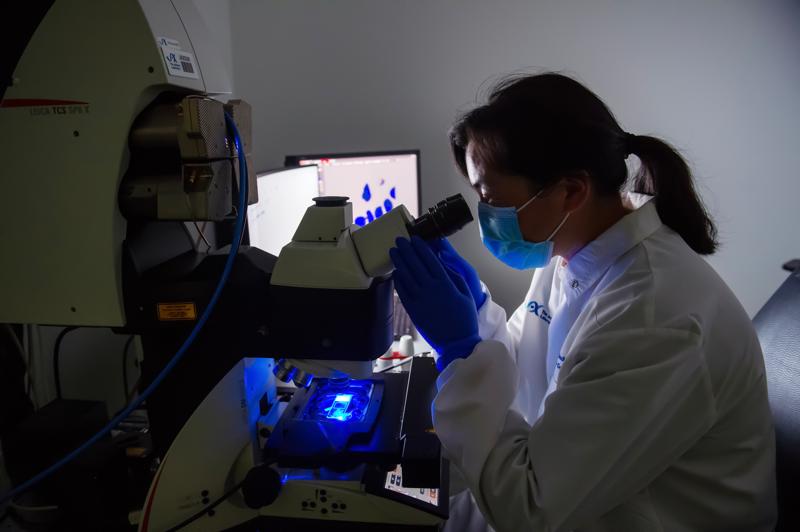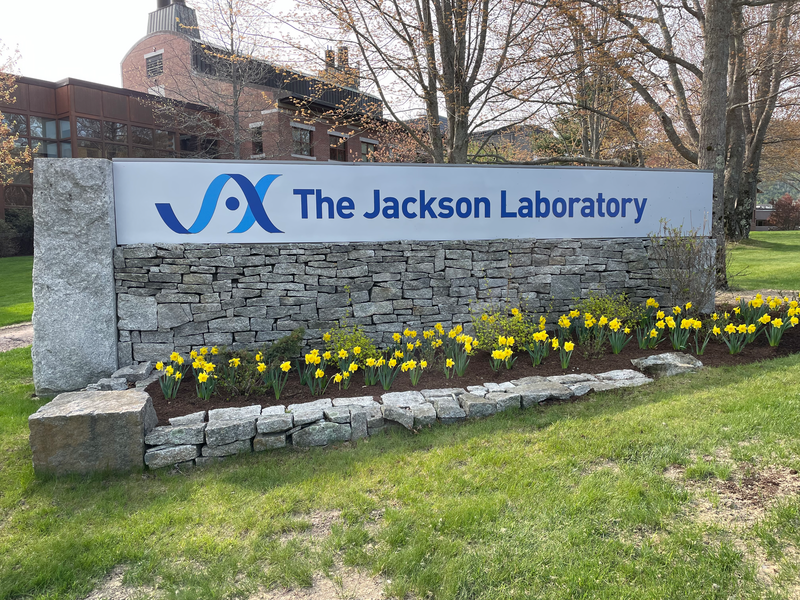What rare diseases can teach us about the rest of medicine
Media Release | July 14, 2025
When researchers discovered rare mutations in the PCSK9 gene that caused either extremely low or extremely high cholesterol levels, it wasn’t just a genetic curiosity. It was a breakthrough. Those genetic variations, found in a miniscule percent of the population, led to the development of a powerful new class of cholesterol-lowering drugs now prescribed to millions.
For Nadia Rosenthal, scientific director at The Jackson Laboratory (JAX), the lesson is clear: “Rare diseases often give us a clear window into the fundamental workings of biology,” she said. “And what we see through that window can tell us about much more widespread conditions.”
Rosenthal, also a professor in JAX’s Laboratory for Mammalian Genetics and the Chair of Cardiovascular Science at Imperial College London, has spent her career studying genetic variations that predispose people to both rare and complex diseases. This month, in a perspective published in Trends in Genetics, she lays out a compelling argument: studying rare diseases isn’t just a moral imperative—it’s also one of the smartest ways to understand, and eventually treat, common illnesses like cancer, Alzheimer’s, and diabetes.
But the paper is more than a scientific overview. It’s a call to action.
While rare diseases have traditionally received less attention and funding, Rosenthal argues that they should be prioritized not just for the sake of patients with these conditions, but because they offer unparalleled insight into how human biology and disease really work.
Genes don’t act alone
Rare diseases, for all their heartbreak and clinical complexity, often begin with a single faulty gene. Unlike common diseases such as diabetes, cancer, or Alzheimer’s—where risk is spread across hundreds of small-effect variants and shaped by environment—rare diseases tend to be caused by one dramatic mutation. That clarity makes them a powerful tool for scientists trying to map how biology can break down with disease.
Rare diseases tend to hit hard and early because they involve essential genes,” Rosenthal explains. “These are genes that evolution has kept under tight control, so when something goes wrong, it goes very wrong.”
The traditional view is that rare disease research might sometimes reveal a drug target useful in the broader population. That’s true, and examples like PCSK9 prove it. But Rosenthal’s argument goes deeper. She believes rare diseases are also essential for revealing a bigger, messier truth about health: that almost no one’s disease is caused by just one factor.
That’s where the concept of genetic background—the rest of a person’s genome—comes in. People with the same rare mutation often have wildly different symptoms. Some might be bed-ridden, with severely shortened lifespans. Others barely affected—or not even aware they carry a mutation. And increasingly, researchers are finding that these differences aren’t random; they’re shaped by the rest of the genome. Other genes act as modifiers, either amplifying or buffering the effects of a damaging mutation.
That insight doesn’t just apply to rare diseases. It’s a preview of what makes common diseases so hard to understand, and why most of our genetic models are incomplete. The reason one person develops heart disease or diabetes while another doesn’t may lie in subtle, protective variations scattered across their genome, some of which may be easier to find by studying rare disorders.
“If you want to know why your mom got cancer and you didn’t, or vice versa, the answer is in those genetic modifiers,” said Rosenthal.
Simple systems, deep insights
For complex diseases like heart disease or cancer, pinning down genetic modifiers—which may each have tiny effects—is difficult. For rare diseases tied to one major mutation, the link is easier, especially with vast libraries of mouse models like those found at JAX.
Rosenthal and her JAX colleagues can take mice with one single, rare-disease-linked mutation, and breed them with a genetically diverse collection of other mice. Then, they study which mice get sick and which are resilient. Those resilient mice may carry modifier genes that buffer against disease—and could point the way to new drug targets.
“It’s very difficult to find resilience genes in humans,” she said. “There’s too much background noise. But in mice, we can stack the deck and find out what’s making the difference.”
In some cases, those protective genetic modifiers are part of the same pathway as the disease gene itself. In others, they are less obvious, operating in entirely different systems and offering unexpected insights into how the body compensates and maintains stability under stress.
“What we’re seeing is not just what breaks, but how biology tries to fix itself,” Rosenthal said. “And that’s the kind of knowledge that helps us develop smarter therapies for everyone.”
Ultimately, research into the causes and treatments of rare diseases can tell scientists how genetic background shapes disease risk for both rare and common diseases, Rosenthal believes. By studying how genetic disruptions lead to disease—or don’t—researchers can design treatments that target entire pathways, not just individual mutations.
A continuum of disease
In Rosenthal’s view, the line between rare and common disease is more artificial than biological. Genes linked to rare disorders often show up as background players in common diseases, while genetic modifiers in common diseases can shape how rare conditions appear. It’s a continuum, not a divide.
Yet research funding and public attention rarely reflect that interconnectedness. Rosenthal argues that large, deep studies of rare diseases are needed to move biology forward.
“We can’t do this work with one mouse or one cell or one patient,” she said. “We have to do it with many—because that’s the only way to understand the variability, and the biology, that drives disease.”
Rosenthal’s message is clear: studying rare diseases isn’t a side project—it’s essential. These conditions provide nature’s experiments in how genes work, how they fail, and how the body sometimes finds ways to compensate.
By investing in rare disease research, we’re not just helping the millions of patients and families directly affected. We’re also opening doors to broader discoveries that could reshape medicine for everyone.
“Don’t forget what we can learn from rare diseases,” Rosenthal said. “They may be rare, but their value is anything but.”


